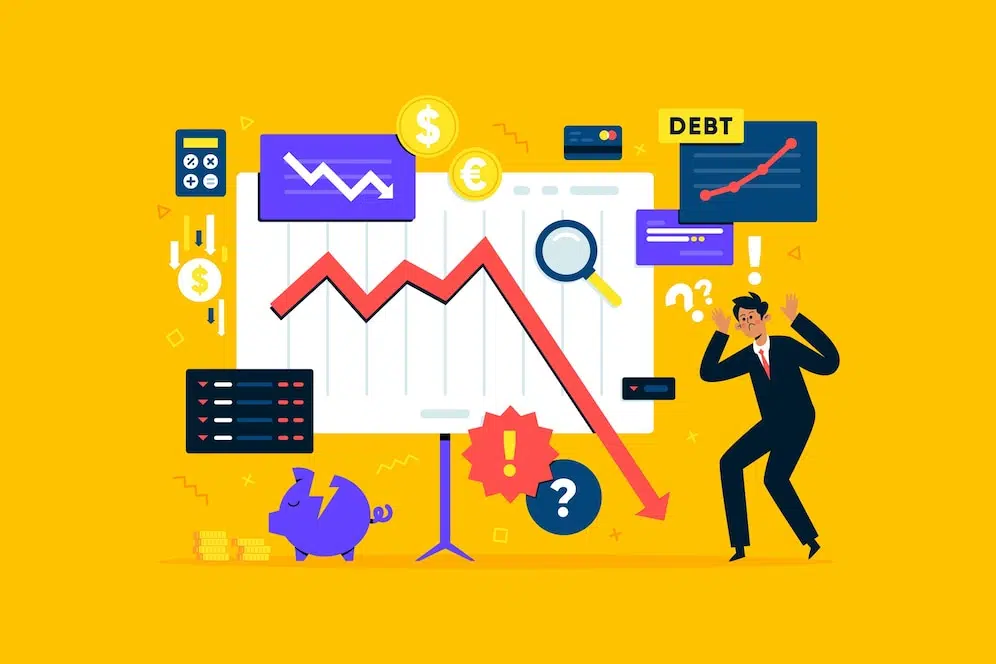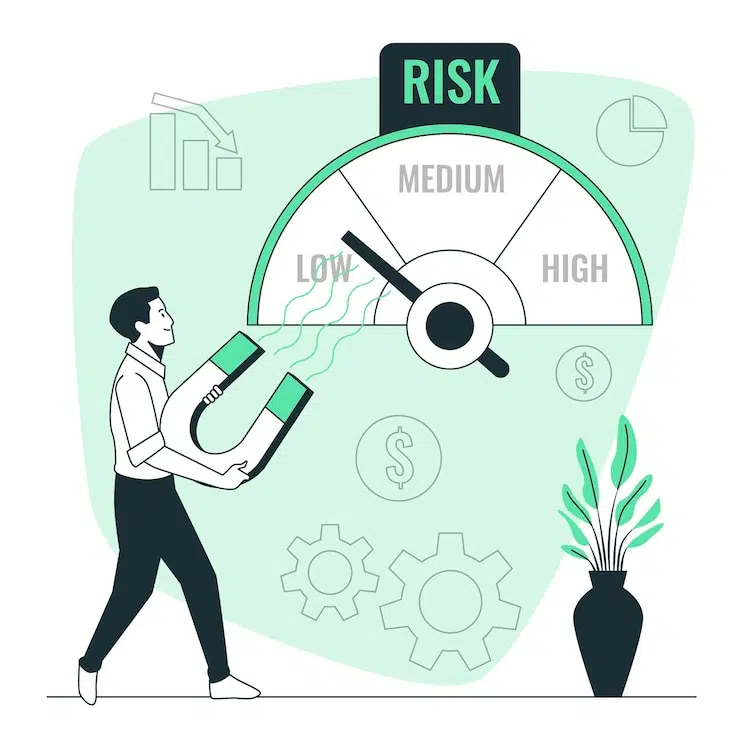What Is Financial Risk Management? Features & Guide
Risk management entails the identification, analysis, and acceptance or mitigation of uncertainty in investment decisions. However, its scope extends beyond these actions. To provide deeper insight into the invaluable role of risk management in businesses, we have diligently researched and synthesized our findings into the article titled ‘What is Financial Risk Management?’
What Is Financial Risk Management?
Analytics consulting plays a crucial role in financial risk management by unraveling intricate data to guide strategic decision-making. Initially spurred by the necessity to grasp and alleviate financial uncertainties, this field has progressed to incorporate a range of advanced techniques. At its essence, financial risk management centers on recognizing potential risks, assessing their consequences, and deploying tactics to handle them adeptly.
In contrast to other forms of risk management, which might concentrate on operational or reputational hazards, financial risk management is solely concerned with the financial facets of an organization. It stands as a cornerstone of the decision-making process, furnishing valuable insights that steer investment selections, funding approaches, and risk mitigation strategies.
How Financial Risk Management Works?
Financial risk management is like having a well-thought-out plan to protect money and make it grow even when things get dicey. Here’s how it works:
- Spotting Risks: It’s all about keeping an eye out for potential trouble in different money matters like markets, credit, cash flow, and day-to-day operations.
- Weighing Risks: Once the risks are identified, they are figured out in terms of how big they could be and how likely they are to happen. This helps figure out which risks need to be tackled first.
- Taking Control: There’s no just sitting back and hoping for the best. Smart strategies are developed to either reduce or completely get rid of those risks. Think of it like playing chess with finances.
- Keeping Watch: It’s not a one-and-done deal. A close watch is kept on everything going on with the money. If things start to look shaky, strategies are tweaked to stay on track.
Financial risk management isn’t just a nice-to-have; it’s a must-have for any organization looking to keep their finances safe and sound, especially when the economy is playing tricks.
Types Of Financial Risks

Let’s learn about the 4 types of financial risks!
In contemporary business environments, there exist four distinct categories of financial risks: Market, Credit, Operational, and Liquidity risks. Within this discussion, we will delineate each type of risk and propose strategies for their mitigation.
Market risk
Market risk is all about the chance of losing money because of changes in market prices—think stocks, interest rates, currencies, and commodities. It’s like when you invest in a company’s stock and then it tanks because of a sudden economic downturn or some new rules. That’s market risk for you, messing with investors’ wallets and making it crucial to handle risk smartly.

Market risk is the wild card of investment. It’s the unpredictable force that reminds us that even the most carefully crafted strategies are subject to the whims of the market.
Understanding market risk means keeping a close eye on market conditions. Leaders in companies do this to spot potential trouble and figure out how much risk they’re facing. They use methods like:
- Stress testing: This is like running a bunch of “what if” scenarios to see how well a company can handle financial disasters. It’s a way to figure out how long a company can keep chugging along without getting any new customers.
- Value-at-Risk (VaR): This fancy term measures how much money an investment might lose over a certain time and how likely that loss is. It’s a tool risk managers use to keep tabs on and manage risk exposure.
Credit risk
Credit risk is when a lender faces potential losses because a borrower doesn’t pay back a loan. It’s a big deal in managing money risks because it’s hard to know for sure if people will repay their debts. If they don’t, lenders can have problems like not getting their money back on time and spending more to chase down payments.

Credit risk is the silent undertow of finance, lurking beneath the surface, ready to pull under those who underestimate its power.
To handle this, lenders need to be smart about assessing and dealing with credit risk. They might use special software to help them out. Here’s what they usually do:
- They look at the borrower’s credit history, money they have, and if they can actually pay back the loan.
- They check out the financial records of folks or businesses asking for loans.
- They study the borrower’s industry to guess how likely it is they won’t pay back and then set the right interest rates.
To make sure they’re protected, lenders might:
- Ask borrowers to give something valuable as security for the loan.
- Do a deep dive into a borrower’s credit before saying yes to a loan.
- Get insurance to cover them if someone doesn’t pay up.
Operational risk
Operational risk is all about the possibility of suffering losses due to internal hiccups, human goofs, or outside factors like fraud or legal troubles. Picture this: an employee messes up a transaction, causing financial headaches. It’s a wakeup call for having solid systems in place to prevent such blunders. Take, for instance, a scenario where a delay in delivering a product leads to financial losses from having to redo it. To avoid such headaches, organizations need to get a grip on operational risks to stay strong in the face of potential disruptions.

Types of Operational risk – Image source: WallStreetMojo
So, how do they do it?
- Keep up with regular audits.
- Tighten up those internal controls.
- Invest in top-notch technology.
And with tech racing ahead, companies are tapping into advanced risk management tools that include key risk indicators (KRIs) to stay on top of operational risks effectively.
Liquidity Risk
Imagine you owe someone money soon, but your bank account is running low. That’s a financial tight spot, and in the business world, it’s called liquidity risk. This risk is especially important for banks, where customers might want to withdraw their money all at once.
If a company can’t quickly turn its investments into cash, it can struggle to pay its bills and keep running smoothly. This is why good liquidity risk management is key. By planning ahead, businesses can make sure they have enough cash on hand to meet their short-term needs and avoid any financial hiccups.
Why Is Financial Risk Management Important?
Financial risk management is a critical cornerstone for businesses and investors alike, offering a solid base for stability and trust. It’s all about spotting, understanding, and dealing with financial risks to keep a company’s assets and earnings safe. With smart strategies in place, businesses can navigate through market ups and downs while seizing opportunities without putting their finances in jeopardy.
The perks of having a strong financial risk management system are huge. It helps companies stay afloat during tough economic times, ensuring they keep moving forward steadily. By minimizing potential losses, it also protects the value of investments and builds confidence among shareholders. Plus, it helps in meeting all the legal requirements, shielding companies from any legal troubles and damage to their reputation.

Financial risk management is not merely a choice but a necessity in today’s volatile economic landscape. It serves as the compass guiding businesses through uncertain waters, ensuring stability, resilience, and the ability to seize opportunities amidst adversity.
But on the other hand, ignoring risk management can lead to serious trouble. Unexpected financial problems can lead to big losses, even bankruptcy, or worse, affecting the whole economy. Just think back to the 2008 financial crisis for a stark example of what can happen when risks aren’t managed properly.
For everyone involved—shareholders, creditors, and regulators—having a handle on financial risk is crucial. It ensures that companies can meet their commitments, reducing the chances of things going south and keeping the economy stable. So, it’s not just about playing defense. It’s about using risk management as a smart strategy to give businesses an edge and keep them going strong for the long haul. After all, it’s the foundation of sound business practices and economic success.
Risk Management Techniques
Effective Risk Management Techniques Simplified:
- Diversification: Think of it as not putting all your eggs in one basket. Diversification means spreading your investments across different types of assets to lessen the impact if one investment doesn’t perform well. For instance, instead of only investing in stocks, you could balance your portfolio with stocks, bonds, and real estate.
- Hedging: This is like having an umbrella on a rainy day. Hedging involves using financial tools to offset potential losses in another investment. Let’s say you’re a farmer worried about a poor harvest. You could buy a futures contract that guarantees a minimum price for your crops, reducing the risk of losses.
- Insurance: This is a straightforward strategy where you shift the risk to an insurance company by paying a premium. In return, you’re financially protected if a covered event (like a fire or illness) happens.
Pros and Cons:
Each technique has its advantages and drawbacks. Avoidance can give you peace of mind but might limit your potential returns. Retention is simple but can expose you to big losses. Sharing and transferring spread out the risk, but you might lose some control or need to pay extra. Loss prevention is proactive, but its effectiveness depends on the specific risk.
Real-Life Examples:
Picture a company launching a new product. They might use diversification by trying out the product in different markets, hedging by offering a money-back guarantee, and transferring liability insurance to protect against product defects.
Practical Advice:
- Identify your risks: First, understand what could go wrong.
- Choose the right techniques: Tailor your approach to fit the specific risk.
- Keep an eye on things: As situations change, adjust your risk management strategy accordingly.
By following these steps and understanding these techniques, you can effectively handle risks and make smart decisions in various situations.
Types of Risk Management Techniques
In this section, we delve into the diverse array of risk management techniques, exploring their applications, strengths, and limitations in navigating the complex landscape of risk.
Beta and Passive
Beta, a crucial metric in investment analysis, measures a portfolio’s volatility compared to the broader market. Simply put, a beta above 1 implies higher volatility, while below 1 suggests lower volatility. This metric plays a key role in passive risk management strategies, which prioritize mirroring market movements rather than trying to beat them.
Passive strategies, like investing in index funds and Exchange-Traded Funds (ETFs), take advantage of beta by tracking market indices. They offer a cost-effective way to diversify investments and gain exposure to the overall market. These strategies are popular for their simplicity and ability to provide broad market coverage, especially for investors with long-term goals.
However, passive strategies do have drawbacks. They are directly linked to the performance of the market index they follow, meaning investors must endure market downturns without any active intervention. Additionally, they miss out on potential above-market returns that active management strategies aim for.
Despite these downsides, passive risk management remains a fundamental aspect of modern portfolio theory. It strikes a practical balance between risk and return, making it an indispensable part of a comprehensive investment approach. By grasping and leveraging beta, investors can align their portfolios with their risk tolerance and financial objectives, ensuring a disciplined and strategic approach to managing wealth.
Alpha and Active
Alpha is like the secret sauce that investment managers use to spice up—or sometimes tone down—a portfolio’s returns. Unlike beta, which measures how much a portfolio dances to the market’s tune, alpha checks if the manager can rock the returns boat regardless of market trends. It’s all about getting more bang for your buck compared to a benchmark index.
To score alpha, managers get crafty with active risk management tactics like cherry-picking stocks and playing the market timing game. This means diving deep into market trends, economic signs, and company health reports. The goal? Spot the diamonds in the rough or predict when the market’s about to make a move so they can buy low and sell high, leaving the market’s performance in the dust.
But let’s not sugarcoat it—active management isn’t all smooth sailing. It takes serious skills, experience, and often comes with a hefty price tag due to frequent trading. Plus, there’s always the risk of falling short, especially if the manager’s crystal ball doesn’t match up with reality.
Still, the payoff for successful active management can be huge. Done right, it can mean major league outperformance compared to passive strategies, making the extra risks and costs totally worth it. For investors hungry for bigger returns, understanding and tapping into alpha through active risk management is like having a secret weapon in the investment game.
Methods And Financial Risk Management Tools
Risk management has evolved significantly, blending traditional approaches with cutting-edge technology for enhanced effectiveness. Traditional financial risk management tools, such as Value-at-Risk (VaR), offer statistical insights into investment risks, while stress testing models simulate various financial scenarios to gauge institutional resilience during tough times.
Innovative techniques, powered by machine learning and artificial intelligence (AI), now play a pivotal role in risk management. These technologies analyze extensive datasets to uncover patterns that might escape human observation, revolutionizing risk assessment with deeper insights and more precise forecasts.
Furthermore, specialized financial risk management software and platforms have become essential tools. They streamline operations, consolidate risk data, and enable real-time analysis, empowering organizations to adapt swiftly to market shifts.
By embracing these advancements, organizations can fortify their risk management capabilities, ensuring readiness to navigate the complexities of today’s financial landscape. Integrating traditional wisdom with innovative technology stands as the cornerstone of a resilient risk management strategy in the digital era.
The Bottom Line
Financial risk management boils down to finding the sweet spot between boosting investment returns and reducing financial hazards. It’s a constantly evolving and intricate area, demanding ongoing vigilance and adjustment to keep pace with changing market landscapes, regulations, and technological progress. Successful financial risk management not only shields a company’s assets but also fosters stability and effectiveness in financial markets and the broader economy.
Savvycom – Your Trusted Tech Partner
From Tech Consulting, End-to-End Product Development to software development consulting services! Since 2009, Savvycom has been harnessing the power of Digital Technologies that support business’ growth across a variety of industries. We can help you with high-quality software development services solutions and products as well as deliver a wide range of related professional services.
Savvycom is right where you need. Contact us now for further consultation:
- Phone: +84 24 3202 9222
- Hotline: +84 352 287 866 (VN)
- Email: [email protected]


